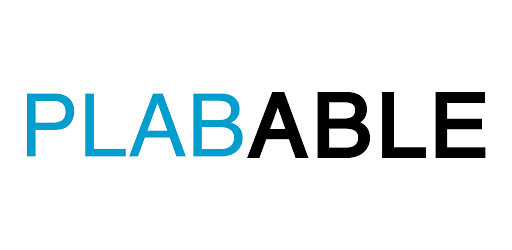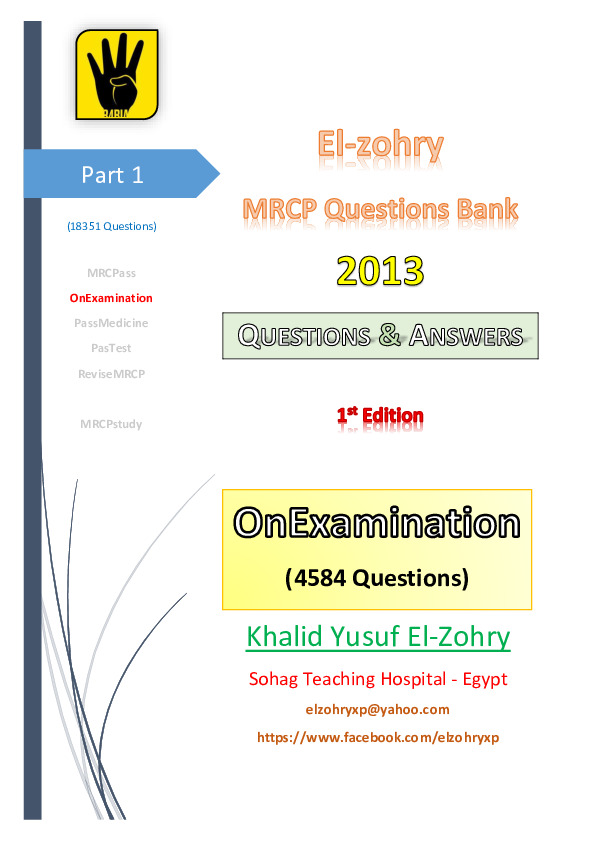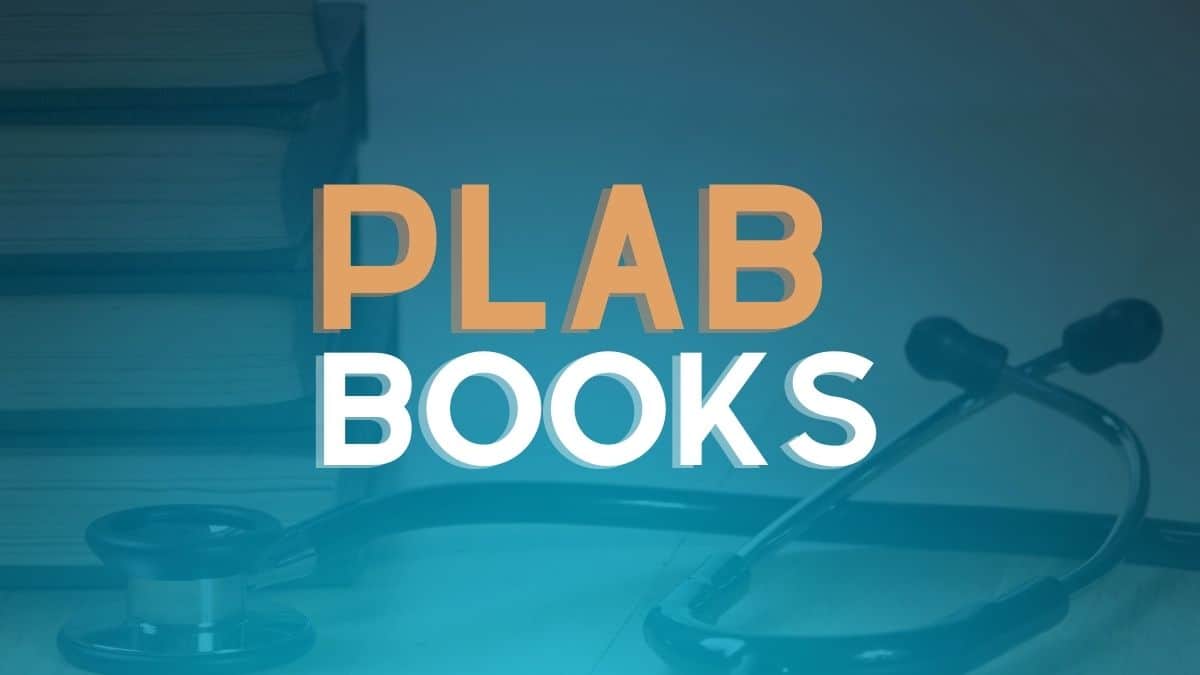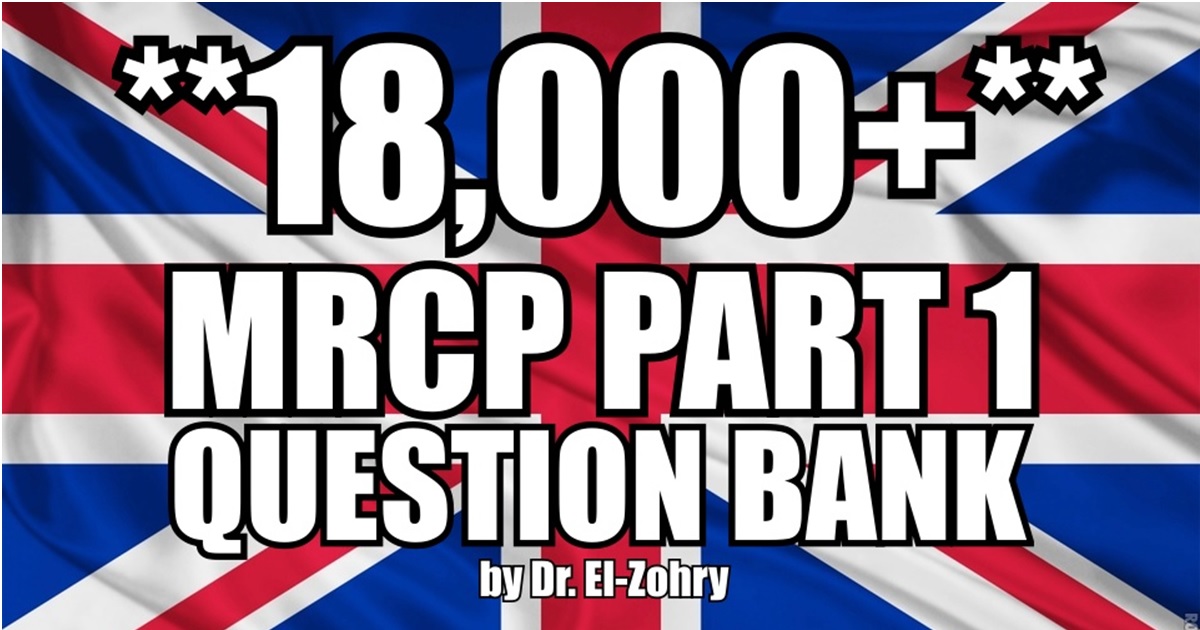CPSP Past Papers MCQs [Authentic]
101) The subtalar joint is formed between
A) Talus, malleoli and lower tibia
B) Talus and calcaneum
C) Talus and navicular
D) Calcaneum and cuboid
102) Pain felt between great toe and 2nd toe is due to involvement of which nerve root
A. L5
B. S1
C. S2
D. S3
103) A benign tumour in the pterygoid canal would spare which of the following nerve fibers
A) Postganglionic parasympathetic fibers
B) Taste fibers from the palate
C) Postganglionic sympathetic fibers
D) General visceral afferent (GVA) fibers
104) A patient with crocodile tears syndrome has spontaneous lacrimation during eating due to misdirection of regenerating autonomic nerve fibers. Which of the following nerves has been injured
A) Facial nerve proximal to the geniculate ganglion
B) Chorda tympani in the infratemporal fossa
C) Facial nerve at the stylomastoid foramen
D) Lacrimal nerve
105) Excessive contraction of following muscle causes dislocation of jaw
A) Temporalis
B) Lateral pterygoid
C) Medial pterygoid
D) Zygomaticus Major
106) Medial medullary syndrome is commonly due to lesion of the artery
A) Posterior inferior cerebellar
B) Anterior inferior cerebellar
C) Vertebral
D) Basilar
107) Safety muscle of larynx
A) Lateral cricoarytenoid
B) Posterior cricoarytenoid
C) Thyroarytenoid
D) Cricothyroid
108) Extradural haematoma occurs commonly due to the rupture of a vessel , which passes through
A) Foramen rotundum
B) Foramen spinosum
C) Foramen lacerum
D) Inferior orbital fissure
109) If a patient is unable to tense the vocal cords during high pitch singing, which of the following muscles is paralyzed
A) Lateral cricoarytenoid muscle
B) Cricothyroid muscle
C) Posterior cricoarytenoid muscle
D) Thyroarytenoid muscle
110) Lymph from heel and lateral aspect of foot first drains into
A. Popliteal lymph nodes
B. Deep inguinal
C. Superficial inguinal
D. Obturator node
101.B 102.A 103.A 104.A 105.B 106.C 107.B 108.B 109.B110.A
111) A patient is unable to invert the foot, indicating lesions of which of the following nerves
A) Superficial and deep peroneal
B) Deep peroneal and tibial
C) Superficial peroneal and tibial
D) Medial and lateral plantar
112) Which of the following cranial nerves exit/enter through the foramina in posterior cranial fossa
A) 3rd to 12th
B) 4th to 12th
C) 5th to 12th
D) 7th to 12th
113) The narrowest part of ureter is
A. Uretero pelvic Junction
B. Iliac vessel crossing
C. Pelvic ureter
D. Uretero vesical junction
114) The cranial nerve with the longest intra-cranial course is
A) Abducens nerve
Trochlear nerve
C) Optic nerve
D) Trigeminal nerve
115) Which of the following is not supplied by hypoglossal nerve
A) Genio-hyoid
B) Thyrohyoid
C) Genio-glossus
D) Palato-glossus
116) Hemivertebra is a defect of
A) Body
B) Transverse process
C) Spine
D) Posterior vertebral arches
117) A newborn baby has a prominent defect at the base of his spine through which his meninges and spinal cord protrude. A failure of which of the following processes is the most common cause of this type of defect
A) Development of primary vertebral ossification centers
B) Development of the pedicle
C) Development of the superior articular process
D) Fusion of the vertebral arches
118) True regarding common bile duct is all except
A. Opens 10 cm distal to the pylorus
B. Lies anterior to I.V.C.
C. Portal vein lies posterior to it
D. Usually opens into duodenum separate from the main pancreatic duct
119) These ventral spinal rootlets are less prone to injury during decompressive operations because they are longer and exit in a more oblique direction
A) C5
B) C6
C) T5
D) L5
120) The cardiac jelly formed around the heart tube during early development, contributes to the formation of
A) Pericardium
B) Mesocardium
C) Myocardium
D) Endocardium
111.B 112.D 113.D 114.B 115.D 116.A 117.D 118.D 119.D 120.D
121) Absence of conotruncal septum gives rise to
A) Tetralogy of Fallot
B) Patent truncus arteriosus
C) Transposition of great vessels
D) Coarctation of aorta
122) Intercostobrachial nerve is a branch of thoracic nerve
A) First
B) Second
C) Third
D) Fourth
123) True about right phrenic nerve is
A) Arise from the dorsal rami of C3,4,5
B) Descends posterior to the hilum of lungs
C) Supplies diaphragmatic peritoneum
D) Passes through oesophageal opening
124) A patient has aspiration pneumonitis develops chest pain with dullness on percussion in area medial to the medial border of scapula on the elevation of arm. Which part of lung is most likely to be affected
A) Right medial basal lobe
B) Right superior lobe
C) Right apical lobe
D) Right Posterior basal lobe
125) Ligamentum arteriosum attachment is between
A) Left pulmonary artery and arch of aorta
B) Arch and descending thoracic aorta
C) Ascending and descending thoracic aorta
D) Pulmonary trunk and left principal bronchus
126) Middle part of interventricular septum is supplied by the artery
A) Posterior interventricular
B) Left anterior descending
C) Circumflex artery
D) Acute marginal artery
127) All are hybrid muscles except
A) Brachioradialis
B) Pectoralis major
C) Brachialis
D) Flexor digitorum profundus
128) In C-5,6 lesion following pair of muscles may not be paralyzed
A) Coraco-brachialis
B) Biceps brachii
C) Brachialis
D) Brachio-radialis
129) All of the following muscles strictly receive nerve supply from anterior interosseous nerve except
A) Pronator quadratus
B) Flexor pollicis longus
C) Flexor digitorum profundus of index finger
D) Flexor digitorum profundus of middle finger
130) Following pairs describe the muscles producing flexion at elbow joint & their respective nerve. Choose the wrong pair
A) Biceps brachii: Musculocutaneous nerve
B) Brachioradialis: Median nerve
C) Flexor carpi ulnaris: Ulnar nerve
D) Flexor carpi radialis: Median nerve
121.B 122.B 123.C 124.C 125.A 126.B 127.A 128.A 129.D 130.B
131) During knife fight a person gets injured in the neck region and presents to emergency department with weakness in raising right arm above head. On further examination winging of right scapula is noted. The injury has damaged
A) Spinal accessory nerve
B) Long thoracic nerve of Bell
C) Suprascapular nerve
D) Dorsal scapular nerve
132) The weight of the upper limb is transmitted to the axial skeleton by
A) Coracoclavicular ligament
B) Coracoacromial ligament
C) Costoclavicular ligament
D) Coracohumeral ligament
133) Regarding the anatomical snuffbox which of the following is true
A) Abductor Pollicis longus forms the posterior wall
B) Abductor pollicis longus and Extensor Pollicis brevis form the lateral wall
C) Basilic vein forms the roof
D) Floor is formed by Extensor carpi radialis longus and brevis
134) Ante-verted Position of uterus is maintained by ligament
A. Cardinal
B. Uterosacral
C. Pubo-cervical
D. Round
135) A patient is brought to the emergency with history of trauma to his right upper limb. Extension of metacarpo-phalangeal is lost. There is no wrist drop and extension of IP joint is normal. The most likely nerve involved is
A) Ulnar nerve
B) Median nerve
C) Radial nerve
D) Posterior interosseous nerve
136) All of the following are features of musculocutaneous nerve injury at axilla except
A) Loss of flexion at shoulder
B) Loss of flexion at elbow
C) Loss of supination of forearm
D) Loss of sensation on radial side of forearm
137) If the greater tuberosity of the humerus is lost which of the following movements will be affected
A) Adduction and flexion
B) Abduction and lateral rotation
C) Medial rotation and adduction
D) Flexion and medial rotation
138) C8,T1 supplies following muscles except
A) Extensor indicis
B) 3rd & 4th lumbrical(s)
C) Abductor pollicis brevis
D) Palmar interossei
139) Sensory innervation of index finger is by
A) T2
B) Tl
C) C8
D) C7
140) Attached to radial styloid process is
A) Brachioradialis
B) Pronator quadratus
C) Pronator teres
D) Lateral collateral ligament
131.A 132.A 133.B 134.B 135.D 136.A 137.B 138.A 139.D 140.D
141) Injury to radial nerve at wrist leads to
A) Wrist drop
B) Sensory loss on dorsum of 1st web space
C) Paralysis of adductor pollicis
D) Loss of supination in extended position
142) Injury of ulnar nerve at the wrist would cause all except
A) Paralysis of 3rd and 4th lumbrical(s)
B) Paralysis of dorsal interossei
C) Adductor pollicis paralysis
D) Flexor pollicis brevis paralysis
143) Which bronchopulmonary segment is not present in the left lung
A) Antero-basal
B) Postero-basal
C) Medial basal
D) Lateral basal
144) A 56-year-old man is undergoing a cardiac operation. During the procedure, a ligature is passed into the transverse pericardial sinus. Which of the following vascular structures can now be easily secured by tying the ligature, thus stopping the flow of blood
A) Superior vena cava and inferior vena cava
B) Superior vena cava and right pulmonary veins
C) Aorta and superior vena cava
D) Aorta and pulmonary trunk
145) True about lumbricals is
A) Flex IP joints and extends MCP joint
B) 1st and 2nd supplied by radial nerve
C) 3 and 4 supplied by superficial branch of ulnar
D) Origin from tendons of flexor digitorum profundus
146) Which is true about axillary artery
A) Pectoralis major divides it into three parts
B) Thoracoacromial is a branch of 2nd part
C) Superior thoracic is a branch of 3rd part
D) Subscapular is a branch of 1st part
147) All are true except
A) Midpalmar space communicates with facial sheath of third lumbrical
B) Midpalmar space communicates with forearm space
C) Thenar space communicates with fascial sheath of first lumbrical
D) Midpalmar space drained through 3/4th web space
148) Posterior interosseous nerve runs under which compartment of extensor retinaculum
A) 1st
B) 2nd
C) 3rd
D) 4th
149) Pronation is lost in lesions of
A) Median nerve
B) Ulnar nerve
C) Radial nerve
D) Posterior interosseous nerve
150) Supinator has the same innervation as of the following muscle
A) Biceps brachii
B) Pronator quadratus
C) Extensor digitorum
D) Brachioradialis
141.B 142.D 143.C 144.D 145.D 146.B 147.B 148.D 149.A 150.C





